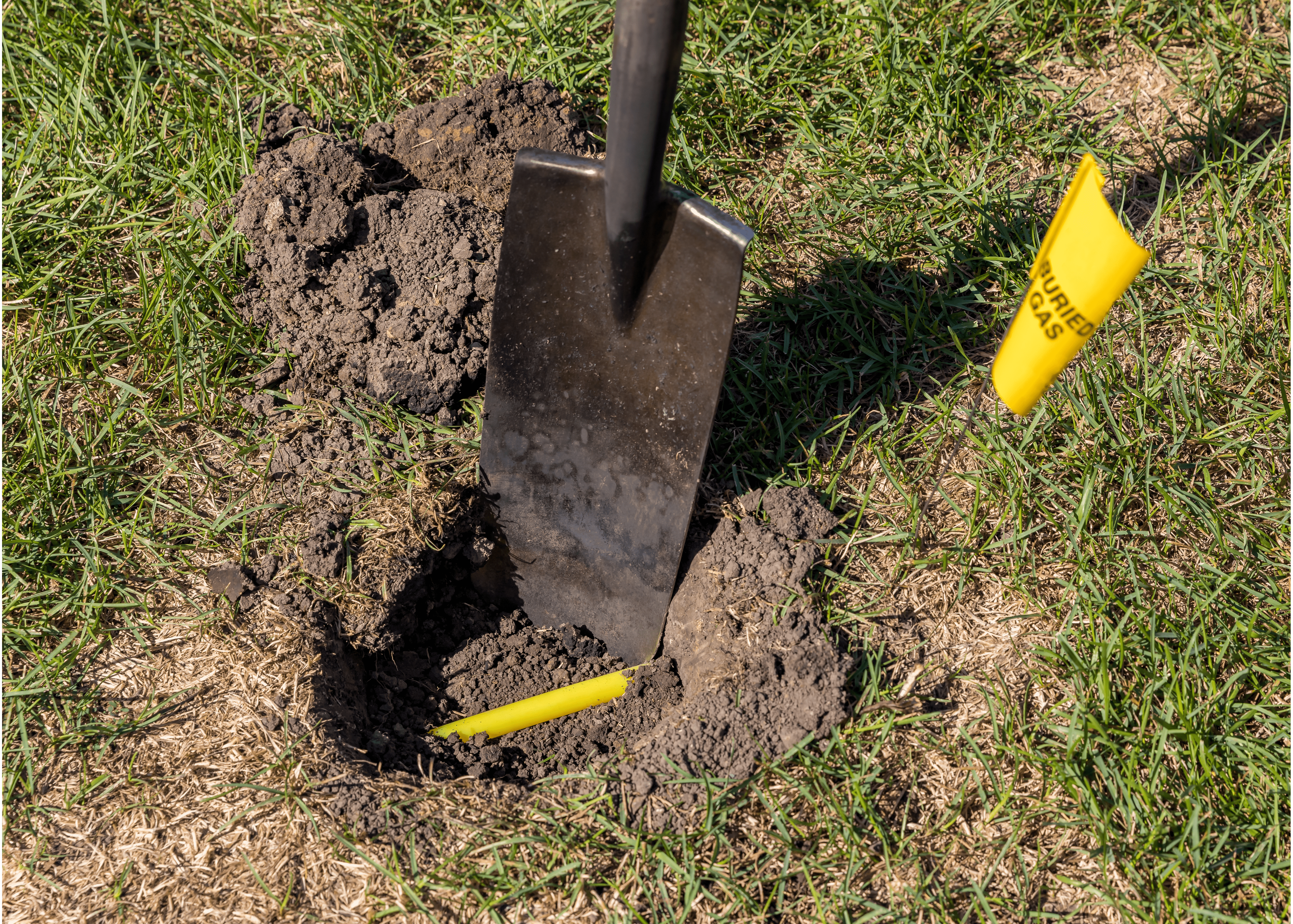
So, you want to update your property? Add some new landscaping, install a fence or mailbox, or build a deck? Home ownership gives you every right to redo your outdoor space as you please. However, before you start such a project, it’s important to consider your own safety and that of your neighborhood by checking for utility lines.
Buried utility lines run underneath your property. These can be electrical service wires, cable TV or internet service wires, telephone service wires, sewer and water mains, and natural gas supply pipes. Knowing where they are will help you avoid the disastrous mistake of making accidental contact while digging.
Few homeowners know the exact layout of utility lines under their property or what updates may have been made in the years past. The depth of buried utilities is not uniform either and may differ from area to area. In colder regions, for example, sewer and water lines can be buried deep below the winter frost line. In warmer parts of the country, they may be closer to the surface.
With millions of miles of underground utility lines running beneath residential yards with no up-to-date blueprint of their exact locations, the need for extreme caution before starting a digging project is clear.
So how will you go about it? Here’s a quick road map:
#1: Call 811
Call in the experts! 811 is the nationwide number that will connect you to the proper organization in your state. Once the call is made, the response crew has 48 hours to come by and mark your underground with a color code:
- Red: indicates electric power lines, cables, conduit and lighting ,cables.
- Yellow: indicates gas, oil, steam, petroleum, or gaseous materials.
- Orange: indicates communication, alarm or signal lines, cables or conduit.
- Blue: indicates potable (drinking) water.
- Purple: indicates reclaimed water, irrigation, and slurry lines.
- Green: indicates sewers and drain lines.
- Pink: indicates temporary survey markings.
- White: indicates proposed excavation site before the locating services markings.
Besides this free 811 service, there are also private location services who will inspect non-public utility lines that were installed by private companies on your property for a fee.
#2: Dig Responsibly
• While exposing utility lines to verify their precise location, be very careful about the sensitive “tolerance” zone. This is the area equal to the width of the facility itself, plus 18 inches on either side.
• Some amount of hand-digging will be necessary. In some states, hand-digging is the rule in the initial phase before switching to power digging when safety inspections have been met. In others, it is hand-digging all the way in the tolerance zone, or some other non-intrusive method that does not involve power.
• Don’t use a pointed spade or a pickax. Loosen the soil with a blunt shovel, and then switch to a regular one to dispose of the debris.
• Avoid digging straight down, as the chances of hitting something unexpected is a lot higher that way. Work at an angle instead.
• For large projects, find out if vacuum excavation (VAC) equipment may be used in lieu of hand-digging.
#3: Important Things to Remember
• Water-soluble paint is used to draw markings on the grass or ground surface by the 811 crew, which means they run the risk of being washed away in the event of a heavy rain. For this reason, markings are considered valid for only 30 days. If your digging project is delayed beyond these 30 days, the markings have to be re-done.
• 811 locating services will not mark your irrigation pipes or any lines (like a gas line to a grill) that you or a previous owner may have installed. Hire a private locating service to take care of this for you.
• Never attempt to move a utility line in any way. Such a job can only be undertaken by qualified specialists.
• If you suspect you may have hit a utility line by accident, stop work and call for help immediately.
• Surveys done by CGA (Common Ground Alliance) have found in the past that as many as 51% of homeowners in the United States put themselves and their community at risk by not calling 811 before launching a DIY digging project. Don’t be one of them. Take this responsibility you owe to yourself and others seriously, and let the 811 locating services do their job of marking underground utilities first.
Surely, waiting 48 hours to do it right is a small price to pay.

